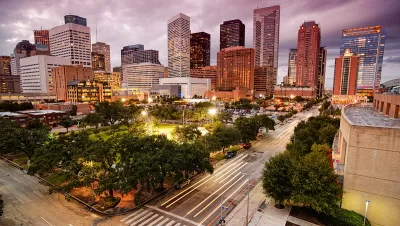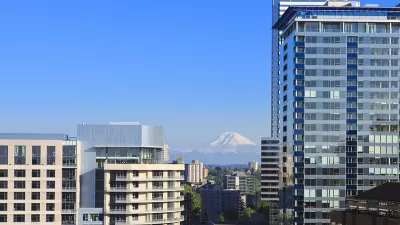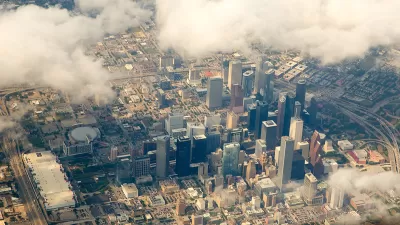With its rapid economic growth, dynamic cities, and increasingly diverse population, Texas could offer a model for the future of the United States.

In an opinion piece for The New York Times, Steven Pedigo argues that Texas is the country's "bellwether state," offering "a glimpse into the country’s economic future and engines of growth as well as its political fault lines in the long run."
Pedigo points to the 2020 Census as well as economic and demographic data from the last two decades, which show that "Texas is urbanizing even faster than California." And as a majority-minority state, "[i]ts present brand of politics may offer clues to the future of struggles across the country between a grasping after mythology and the shifting demographics of America."
Texas, writes Pedigo, "added 4.2 million residents between 2000 and 2010, and another four million in the last decade for a growth rate of almost 40 percent — double that of the country as a whole." Of the new Texans moving to the state since 2010, "over 95 percent of them have been people of color." Close to 70 percent of Texans live in four major metropolitan areas, which are all growing at a rapid rate.
Pedigo credits the state's business-friendly climate and "limited government" with luring major corporations to its cities. "Texas is no longer just about big oil and cattle; we have one of the most diversified economies in the country."
But Pedigo sees a problem with Governor Greg Abbott's "top-down policy agenda that is backward-looking, excludes huge swaths of Texas’s citizenry and runs against the grain of many of its new stakeholders’ values." According to polls, Texans are "deeply concerned about climate change" and "appalled by the G.O.P.’s divisive agenda." What is important to future growth, says Pedigo, is preserving "[t]he Texas model of public-private cooperation with its mutual focus on growth."
FULL STORY: Texas Is the Future of America

Study: Maui’s Plan to Convert Vacation Rentals to Long-Term Housing Could Cause Nearly $1 Billion Economic Loss
The plan would reduce visitor accommodation by 25% resulting in 1,900 jobs lost.

Alabama: Trump Terminates Settlements for Black Communities Harmed By Raw Sewage
Trump deemed the landmark civil rights agreement “illegal DEI and environmental justice policy.”

Why Should We Subsidize Public Transportation?
Many public transit agencies face financial stress due to rising costs, declining fare revenue, and declining subsidies. Transit advocates must provide a strong business case for increasing public transit funding.

Paris Bike Boom Leads to Steep Drop in Air Pollution
The French city’s air quality has improved dramatically in the past 20 years, coinciding with a growth in cycling.

Why Housing Costs More to Build in California Than in Texas
Hard costs like labor and materials combined with ‘soft’ costs such as permitting make building in the San Francisco Bay Area almost three times as costly as in Texas cities.

San Diego County Sees a Rise in Urban Coyotes
San Diego County experiences a rise in urban coyotes, as sightings become prevalent throughout its urban neighbourhoods and surrounding areas.
Urban Design for Planners 1: Software Tools
This six-course series explores essential urban design concepts using open source software and equips planners with the tools they need to participate fully in the urban design process.
Planning for Universal Design
Learn the tools for implementing Universal Design in planning regulations.
Smith Gee Studio
Alamo Area Metropolitan Planning Organization
City of Santa Clarita
Institute for Housing and Urban Development Studies (IHS)
City of Grandview
Harvard GSD Executive Education
Toledo-Lucas County Plan Commissions
Salt Lake City
NYU Wagner Graduate School of Public Service




























